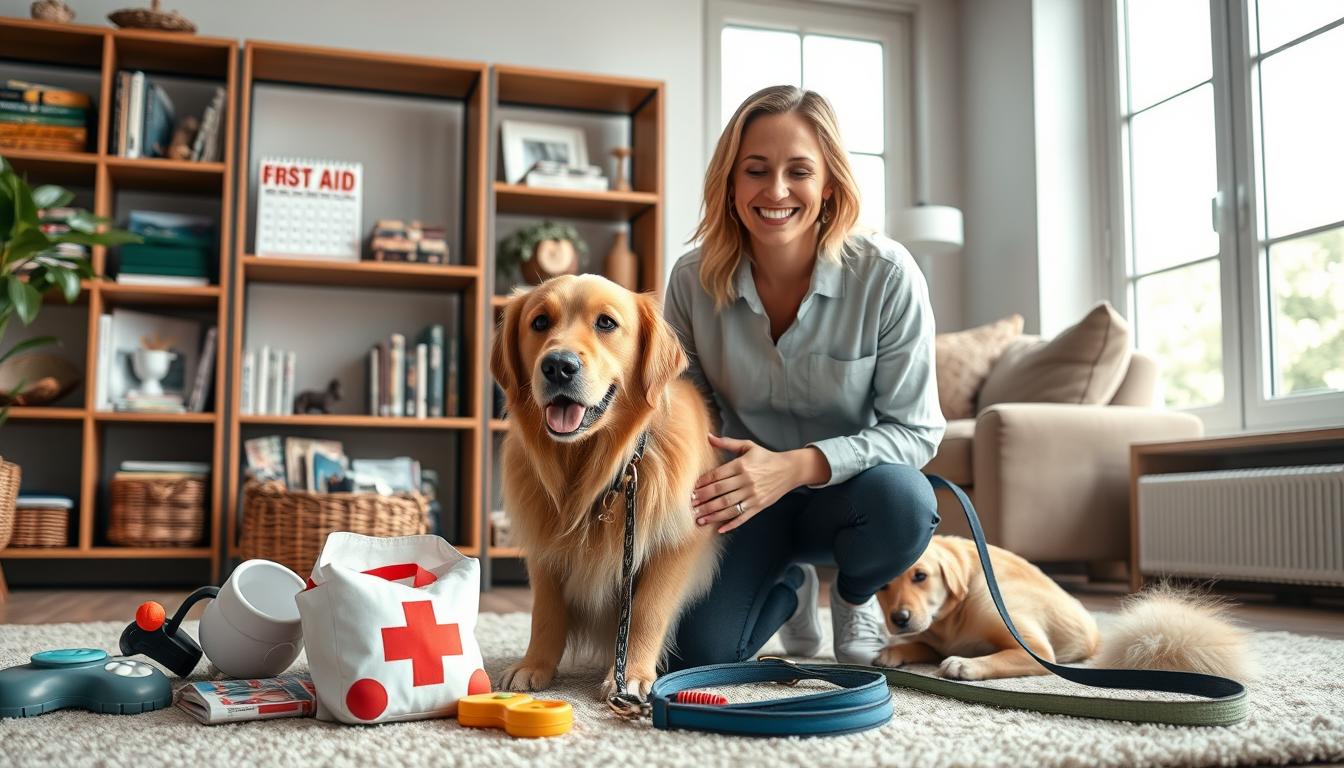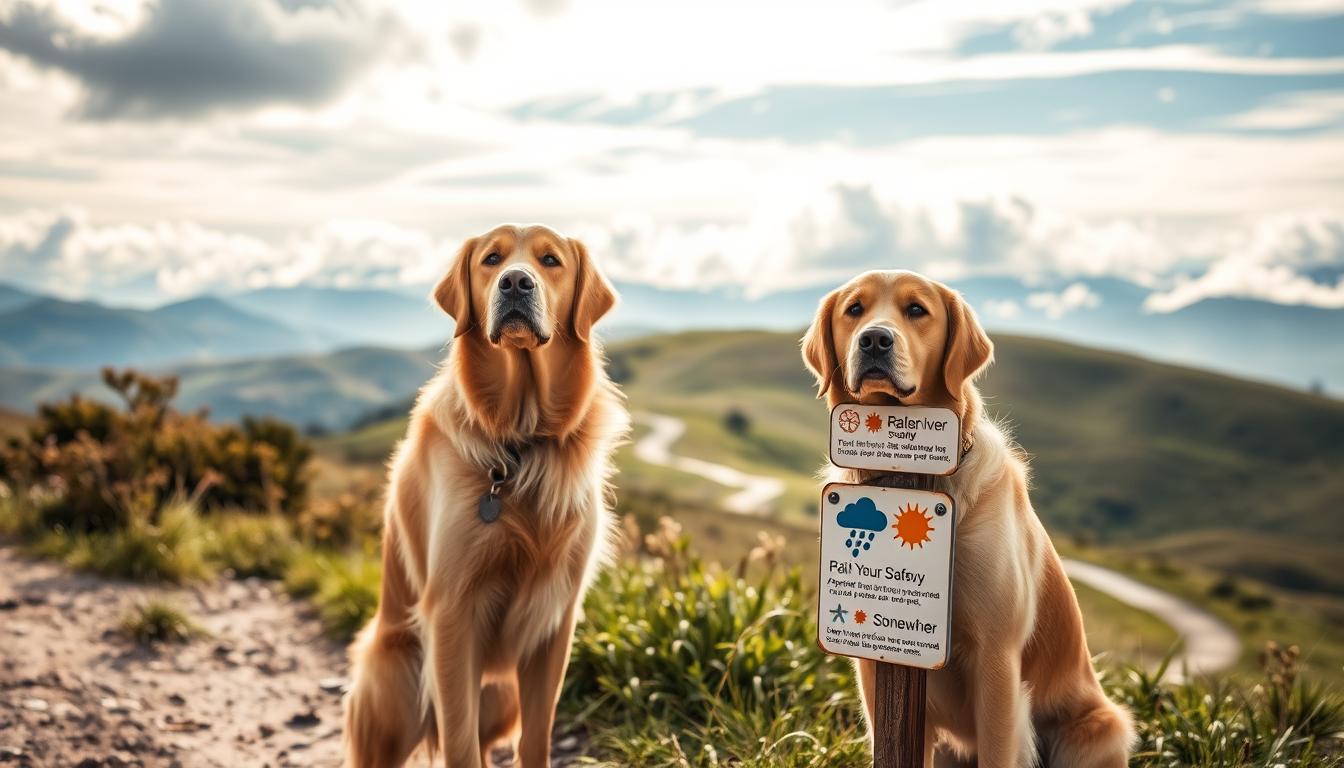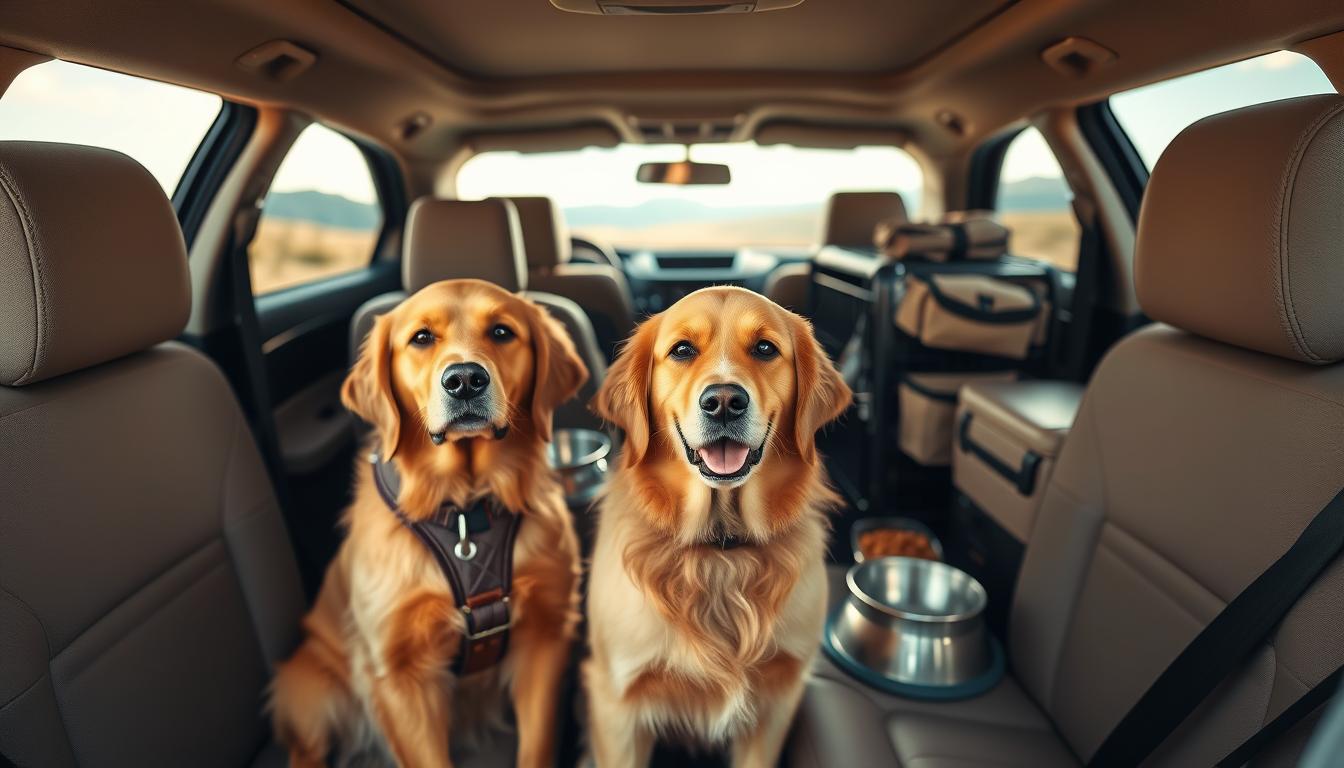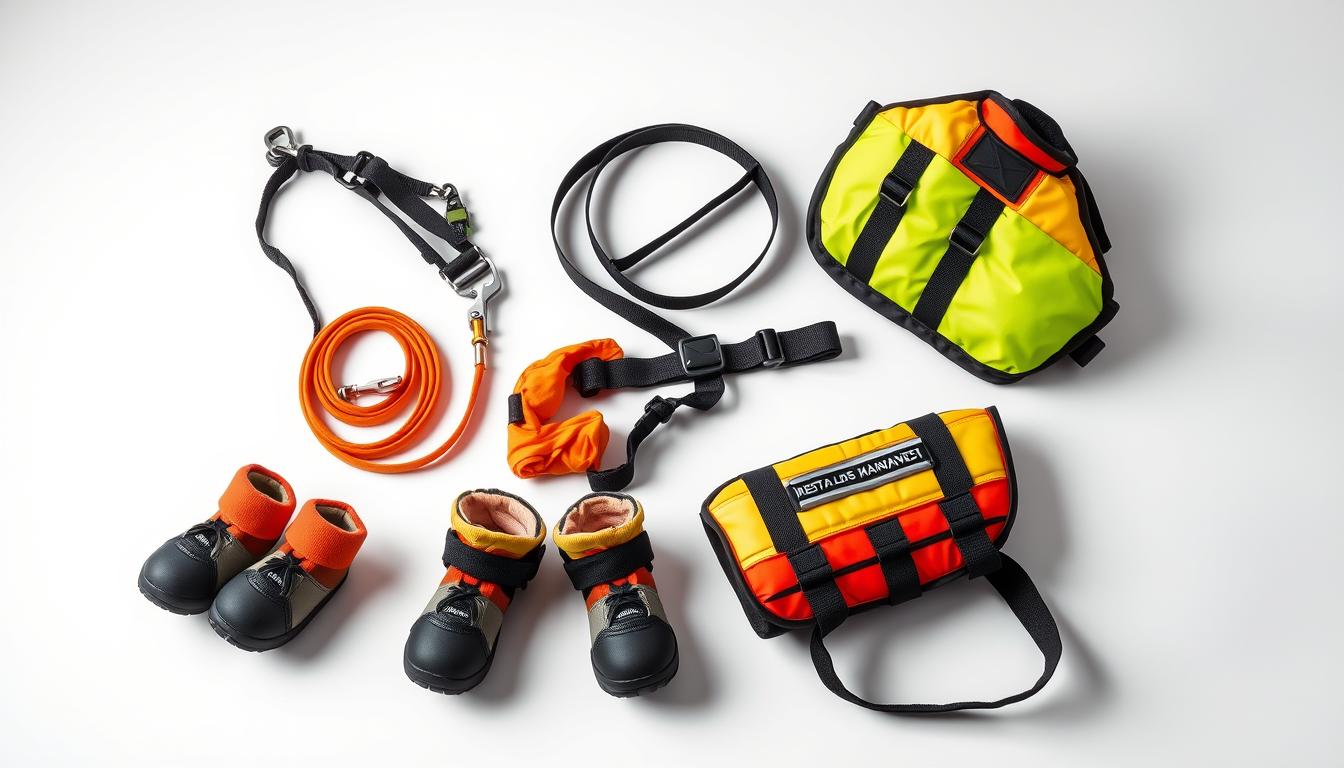Disclosure: This post contains affiliate links. If you click and make a purchase, I may receive a small commission at no extra cost to you. As an Amazon Associate (and participant in other affiliate programs), I earn from qualifying purchases. Thank you for supporting BestDogFencing.com!
As a dog sitter, keeping dogs safe is your top priority. Whether you’re new or experienced, having good safety protocols is key. Dog sitting is rewarding but comes with its own challenges and risks.
Knowing how to keep dogs safe is vital for great care. By following important safety tips, you can lower risks and make a safe space for dogs. This not only keeps dogs safe but also makes you a trusted dog sitter.
Key Takeaways
- Understand the importance of safety protocols in dog sitting.
- Learn how to minimize risks when caring for dogs.
- Discover essential tips for enhancing dog sitter safety.
- Create a safe environment for the dogs in your care.
- Enhance your professional reputation as a dog sitter.
Know Your Canine Client Inside and Out
To give top-notch pet care, knowing your dog client well is key. As a dog sitter, you must understand their health history, quirks, and special needs.
Conducting a Thorough Meet-and-Greet Session
A detailed meet-and-greet is vital to grasp your canine client. Christy Caplan, CVT, says, “If a pet owner shares these symptoms with you during your ‘Meet & Greet’, you must plan with the owner to keep pets safe during and after visits.” Ask the owner about the dog’s habits, allergies, and health issues during this time.
This meeting also lets you see how the dog acts and what they might be feeling. It helps spot any problems early on.
Documenting Medical History and Behavioral Quirks
It’s important to document the dog’s health and quirks for safe and effective care. Keep a record of their vaccination history, allergies, and health conditions. Also, note any odd behaviors, like fear of loud sounds or aggression towards other dogs.
With this info, you can adjust your care to fit the dog’s needs. This ensures their safety and happiness.
Create a Dog-Safe Environment
Making a home safe for dogs is a big responsibility for dog sitters. It’s important to keep the home free from hazards and secure. This means checking the home for risks and fixing them.
Identifying and Removing Household Hazards
The first thing to do is find and remove dangers in the home. The ASPCA says to keep harmful things out of reach. This includes cleaning supplies, medicines, and foods that are bad for dogs. Make sure to secure any loose wires and toxic substances to stop dogs from eating them. Also, keep trash cans closed so dogs can’t get into them.
Securing Doors, Gates, and Potential Escape Routes
It’s also key to lock doors, gates, and places dogs could get out. Dogs might slip out and face dangers like traffic or getting lost. Make sure all doors and gates are locked well, and think about using safety latches or locks dogs can’t reach. Check the yard and around it for places dogs could escape and block them off.
By doing these things, you can make a safer and happier place for the dogs you care for.
Prepare for Pet Emergencies Like a Pro
As a dog sitter, being ready for emergencies is key for the dogs’ safety. Christy Caplan, CVT, stresses the need for emergency preparedness. It’s a must for professional dog sitting services.
Assembling a Comprehensive Pet First Aid Kit
A first aid kit is crucial for minor injuries and emergencies. Your kit should have bandages, antiseptic wipes, tweezers, and a muzzle. Don’t forget a first aid guide for dogs.
Storing Emergency Contacts and Vet Information
Having emergency contacts ready is vital. Keep the dog’s vet contact and medical history handy. Also, list nearby animal hospitals and emergency vet services.
Recognizing Signs That Require Immediate Attention
Knowing when to seek vet help can save lives. Watch for signs like trouble breathing, severe vomiting, and pain. If unsure, always seek vet advice.
With a good first aid kit, emergency contacts, and knowing when to seek vet help, you’ll give top care to the dogs you watch.
Maintain the Dog’s Established Routine
Dogs love routine, and as a dog sitter, keeping their schedule is key. A regular routine lowers their stress and makes their time with you better.
Following Feeding and Medication Schedules
It’s important to stick to the dog’s eating schedule. Puppies and adult dogs eat differently. Puppies need to eat more often than adults. Always follow the owner’s feeding instructions, including the food type and amount. Feeding at the same times keeps their digestive system healthy.
If the dog takes medicine, give it on time. Keeping a log of when you give medicine is helpful. Experts say, “Following the medication schedule is vital for the dog’s health.”
Preserving Exercise and Bathroom Routines
Exercise and bathroom routines are also crucial. Dogs need regular activity to stay fit and happy. Stick to their usual exercise times, like morning walks or evening play. Also, take them out for bathroom breaks at the same times to avoid accidents.
Keeping these routines helps the dog feel safe and prevents health problems. As a dog sitter, paying attention to these details greatly improves the dog’s experience.
Master Safe Walking and Outdoor Management
As a dog sitter, it’s vital to know how to walk dogs safely. This means understanding how to handle them and spotting potential dangers. You also need to know how to avoid these hazards.
Using Proper Leash Techniques for Different Dog Types
Dogs of different sizes have different leash needs. Larger dogs need more control, while smaller dogs need protection from being pulled or escaping. The right leash and harness are key.
A harness is better than a collar for most dogs. It spreads the force of the leash, reducing neck injury risk.
Navigating Environmental Hazards During Walks
Walks can be risky due to toxic plants, sharp objects, aggressive animals, and extreme weather. Knowing these dangers and how to avoid them is crucial. Choose safe paths, watch the weather, and stay alert for dangers.
Follow These 12 Pro Safety Tips Every Dog Sitter Should Know

Being a dog sitter is more than just playing fetch. It’s about keeping your furry friends safe and happy. To do this well, you need to follow important safety tips. These tips help keep you and the dogs you care for safe.
Daily Safety Inspection Checklist
Every day, you should check for safety hazards. Look for things that could harm the dogs, like toxic substances. Make sure electrical cords are not within reach. Also, check that all gates and doors are closed and locked.
- Check for hazardous materials within reach
- Ensure all doors and gates are securely locked
- Verify the absence of choking hazards
Professional Standards That Ensure Dog Wellbeing
Keeping high standards is crucial for the dogs’ wellbeing. Be ready for emergencies and know how dogs behave. Also, keep up with the latest in dog care.
“A professional dog sitter is not just a caretaker but a guardian of the dog’s safety and happiness.” By following safety rules and staying informed, you create a safe and loving space for the dogs you care for.
Safe Travels with Pets: Car Tips for Dog Sitters
Dog sitters need to know how to keep their clients safe in the car. Traveling with dogs requires preparation, knowledge, and the right gear. This ensures a safe and fun trip for both the dog and the sitter.
Properly Securing Dogs in Vehicles
Securing your dog in the car is crucial for dog car safety. Use a dog harness or crate made for car travel. Make sure it fits your dog well and is securely attached to the car.
Essential Items for Dog Car Travel Safety
Having the right items can be a lifesaver in an emergency. Pet travel essentials include a first aid kit, a portable water bowl, and a leash. Keep your dog’s medical records and ID up to date and handy.
Managing Dog Anxiety During Car Rides
Some dogs get anxious in cars, which can be dangerous. Use calming aids like pheromone diffusers or calming treats. Also, talk to a vet for advice. Slowly getting your dog used to car rides can help reduce their stress.
By following these car safety tips, dog sitters can ensure their clients have a safe car rides with dogs. Whether it’s a quick vet visit or a long road trip, being ready is essential for a successful journey.
Handle Multiple Dogs with Confidence and Safety
Managing multiple dogs as a dog sitter can be tough. But, with the right strategies, you can make a safe and peaceful space. It’s all about paying attention, knowing how dogs act, and spotting potential fights.
Understanding Dog-to-Dog Interactions
Dogs talk mostly through body language. Spotting stress or aggression signs is key to avoiding fights. Look for growling, raised hackles, or avoiding eye contact. Knowing these signs lets you step in early to stop trouble.
It’s also vital to know each dog’s personality. Some dogs are more bossy or shy, while others are very active or nervous. Knowing these traits helps you manage their interactions better.
Preventing and Managing Conflicts Between Dogs
To stop fights, prepare well, watch closely, and act fast. Make sure each dog has its own spot for eating and sleeping. This cuts down on competition and stress.
If a fight happens, stay calm and quickly pull the dogs apart. Speak firmly but kindly to calm them down. Then, take away anything that might cause trouble. Watch the dogs closely to make sure they’re okay before letting them play together again.
Adapt to Weather Conditions for Dog Safety

As a dog sitter, it’s vital to adjust to different weather for your dogs’ safety. Weather greatly affects a dog’s comfort and safety. Being ready is crucial for excellent care.
Protecting Dogs from Heat and Dehydration
Hot weather requires special care to prevent heat and dehydration. Make sure dogs have fresh water and shade. Exercise should be during cooler times, and never leave a dog in a car.
Safeguarding Against Cold Weather Dangers
Cold weather poses risks of hypothermia and frostbite. Limit their cold exposure and provide a warm, dry spot. Watch for signs of cold stress like shivering or tiredness.
Managing Dogs During Storms and Extreme Weather
Storms and extreme weather need extra caution. Keep dogs away from windows and doors. Have a plan for emergencies, like a backup spot or supplies. Stay updated on weather forecasts to prepare.
Being mindful of weather changes improves dog safety and comfort. This ensures their well-being and reassures their owners.
Administer Medications Safely and Effectively
As a dog sitter, giving medications safely is key for your furry friends’ health. Making sure meds are given right can mean the difference between a dog’s recovery and a serious issue.
To give meds safely, you must know about different meds and how to use them. This includes knowing how to give pills, apply creams, and give shots if needed.
Techniques for Different Medication Types
Each type of medication needs its own way of being given. For instance, pills can be hidden in treats or given straight. Creams are applied to the skin. Always follow the vet’s instructions for each type.
- Oral medications: Hide in treats or administer directly.
- Topical treatments: Apply to the skin as directed.
- Injections: Follow proper injection techniques and safety guidelines.
Tracking and Documenting Medication Administration
Keeping accurate records of when and how meds are given is vital. Keep a log of the meds given, including the date, time, and amount.
By following these steps and keeping detailed records, you can ensure pet care safety. This way, you can give the best care to your furry friends.
Communicate Professionally with Pet Parents
When you’re dog sitting, talking to pet parents well is very important. You’re not just taking care of the dogs. You also need to keep the pet parents updated and calm about their pets.
Effective communication builds trust and makes the dog sitting smooth. It means giving regular updates, answering questions fast, and handling emergencies well.
Providing Detailed Updates and Reports
Keeping pet parents in the loop is key. This includes:
- Daily logs of the dog’s activities, like when they eat, walk, and any special behaviors.
- Photos or videos of the dog for a visual update.
- Any changes in the dog’s behavior or health, and how you handled them.
Handling Emergency Communications Effectively
In emergencies, clear communication is vital. This means:
- Having a list of emergency contacts, like the pet parents and their vet.
- Knowing how to reach you or your backup at any time.
- Reporting the emergency in detail, including what you did and any care the dog got.
By following these dog sitter tips and keeping communication open, you’ll make sure everyone has a great experience.
Conclusion
As a dog sitter, you play a key role in making sure dogs have a safe and fun time. By following the safety tips in this article, you can reduce risks and make sure everyone has a good experience.
Creating a safe space for dogs and handling them with care are crucial. Every detail matters when it comes to pet safety. Whether you’re on the road with dogs or at home, keeping them safe is vital.
Using dog travel safety tips helps you face the challenges of traveling with pets. By focusing on dog safety, you gain the trust of pet owners. This helps you build a solid reputation as a trustworthy dog sitter.
FAQ
What are the most important safety tips for dog sitters to know?
Dog sitters need to know their dogs well. They should make sure the environment is safe for dogs. They also need to be ready for emergencies and keep the dog’s routine the same.
They must know how to walk dogs safely and manage them outside.
How can I ensure my dog’s safety while traveling by car?
To keep your dog safe in the car, use a harness or crate. Bring food, water, and a first aid kit. Also, help your dog feel calm during car rides.
What should I do in case of a pet emergency?
In an emergency, have a pet first aid kit ready. Keep vet info and emergency contacts handy. Know when to act fast.
How can I handle multiple dogs safely?
Handling multiple dogs safely means understanding how they interact. Prevent fights and keep the environment calm.
What are some tips for adapting to various weather conditions to ensure dog safety?
To keep dogs safe in different weather, protect them from heat and cold. Also, manage them during storms and extreme weather.
How can I safely administer medications to dogs?
To give meds safely, know how to handle different types. Keep track of when you give meds. Always follow the dosage and schedule.
Why is clear and professional communication with pet parents important?
Good communication with pet parents is key. It helps you share updates and handle emergencies. It also ensures the dog’s safety.
What are some pet-friendly travel tips for dog owners?
For pet-friendly travel, research dog-friendly places. Pack what your dog needs. Plan for breaks to avoid tiredness.
How can I ensure dog car safety during road trips?
To keep dogs safe in the car, secure them properly. Bring a first aid kit. Plan breaks to prevent discomfort.





